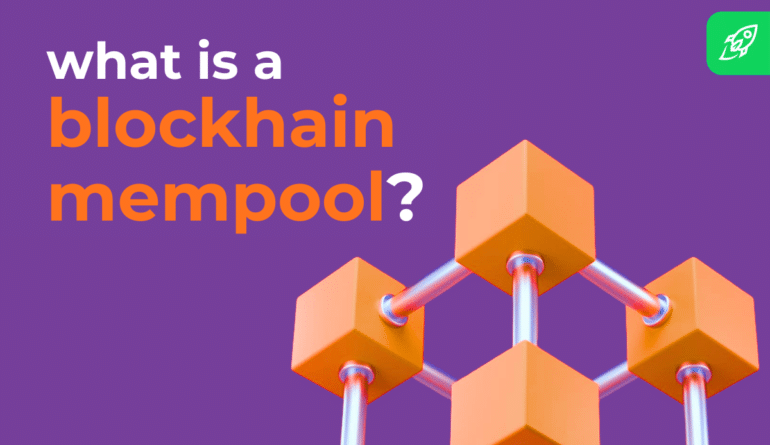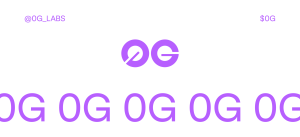What Is a Mempool in Crypto? A Beginner’s Blockchain Guide
You send a blockchain transaction, but wait… nothing’s happened. Don’t panic. Your transaction isn’t lost. It’s just waiting in a mempool: the memory pool each blockchain node keeps for unconfirmed transactions. This isn’t wasted time at all. Mempools are actually a crucial part of blockchain security. If you’re interested in the details, this guide will show you what a mempool is, how they work, and why they matter so much in crypto.
What Is a Mempool?
A mempool (short for memory pool) is where unconfirmed transactions wait to be entered into a block. When you send a transaction into a blockchain, it isn’t confirmed right away. Instead, it lands in the mempool of a blockchain node, marked as pending until it’s included in the next block.
This is an important system which protects the whole network. By holding transactions temporarily, memory pools give nodes time to check validity—like confirming sufficient funds and proper signatures—before anything is locked into the chain. It prevents double-spending and ensures only valid activity can move forward.
Each node keeps its own mempool. That means there’s no single global pool, just lots of similar versions spread across the network. At any given moment, queued transactions may differ between nodes. The mempool’s size also shifts with traffic and depends on a node’s mempool policy. If space runs low, some nodes drop lower-fee transactions first. More on that later!

What Is a Mempool Used For?
A mempool isn’t just a waiting room. It’s a critical step in how blockchains work, and its main job is to hold pending transactions until they can be added to a block on the chain. But that waiting period does more than buy time.
First, it acts as a buffer. Blocks in a blockchain are small and appear at fixed intervals. The memory pool smooths out this flow by queuing up unconfirmed transactions until a block producer is ready. Without it, the network would choke every time traffic spiked.
Second, it’s a filter. Before a transaction sits in the pool, nodes check it against the rules: does the sender have sufficient funds, is the signature valid, and is it free of conflicts? If not, nodes reject these transactions outright. The mempool is the first line of defense against double-spending and invalid attempts.
Third, it’s a marketplace. Inside the mempool, miners prioritize transactions with higher fees. They use a fee market where transactions with higher fees jump ahead of lower-fee transactions. That’s why your payment might confirm in minutes, or linger for hours, depending on what fee you attach and how crowded the pool is.
Finally, memory pools keep things decentralized. Each node maintains its own mempool, following its own mempool policy. Some may drop cheap transactions sooner if they hit a memory pool size limit. Others may keep them longer. This independence makes the network more resilient and fair.
How Transactions Travel Through the Blockchain
When you hit “Send Bitcoin,” your transaction begins its journey on-chain. Your wallet creates a new transaction with the amount, destination, and a fee. This transaction is then broadcast across the blockchain network using the peer-to-peer gossip protocol.
Each blockchain node verifies it. Did you provide sufficient funds? Is the signature valid? If everything’s good, the transaction enters that node’s mempool. From there it spreads through other nodes in a process called transaction propagation.
Now the wait begins. Your transaction is queued in the memory pool with thousands of other transactions. It’s marked as pending until a block producer (a miner in proof-of-work, or a validator in proof-of-stake) builds the next block.
Read more: Proof-of-Work vs. Proof-of-Stake
Selection depends on transaction fees. Miners select unconfirmed transactions from the mempool and run prioritization rules to sort them by fee rate or gas price. Transactions with higher fees are more attractive, while lower-fee transactions may sit in the pool longer or be dropped if space runs out.
Once chosen, the miner solves the math problem required to seal the block. This is the foundation of blockchain technology. On the Bitcoin protocol, it involves finding a nonce (a random number used once) that makes the block’s hash meet the network’s difficulty target. When successful, your transaction is included in a block. It’s then no longer pending, and all nodes remove it from their memory pools.
Why Transactions Stay in a Mempool
So, why does your transaction hang around instead of clearing fast? The answer usually comes down to three things: congestion, fees, and timing.
Network congestion is the big one. A Bitcoin block only fits a few thousand Bitcoin transactions, but tens of thousands can enter the memory pool at a given moment. This backlog creates mempool congestion. Until the load eases, many transactions stay pending.
Low transaction fees are another cause. Miners prioritize transactions with higher fees first, looking for the best profit. Lower fee transactions sit at the back of the queue, sometimes for hours or days. If the memory pool fills past its size limit, some nodes simply drop the cheapest ones.
There are also timing issues. If a new block takes longer to appear, confirmations slow. Or if your payment relies on an earlier pending transaction, both can stall. In some cases, transactions whose parents are missing may be held in an orphan pool until the parent shows up.
The mempool acts as a buffer in all these cases. It absorbs overflow, manages the queued transactions, and keeps the blockchain safe from conflicts. In rare cases of a chain reorganization, even confirmed transactions may briefly return to the mempool until the network settles. That’s why confirmation time can swing from minutes to days, depending on demand.
How Long Do Transactions Stay in a Mempool?
A transaction can sit in the mempool for seconds, or for days. The wait depends on network traffic, your fee, and each node’s memory pool policy.
In quiet times, your new transaction may be included in a block almost instantly. On Bitcoin, that can mean confirmation within ten minutes. But during Bitcoin mempool congestion, when thousands of transactions pile up, low-fee ones may linger much longer. By default, Bitcoin Core removes unconfirmed transactions after 14 days, which gives you an impression of how long confirmation can take in the worst-case scenario. In practice, however, only a few transactions ever sit in a mempool that long.
However, if the memory pool fills up before the two weeks are up, nodes enforce a memory pool size limit. They start dropping the cheapest transactions first, following an eviction policy. That’s why lower-fee transactions sometimes vanish from explorers: it means they’ve been pruned.
Keep in mind that when a transaction is dropped, your coins are still safe. The network never recorded the spend. Your wallet will still show the sufficient funds, ready for a retry.
In short, that’s all there is to it. Your transaction stays in a memory pool until it’s either confirmed in a new block or removed for being too cheap, or too old.
How Can I Release My Transaction from a Mempool?
A transaction stuck in the mempool isn’t gone, it’s waiting. You’ve got options to push it through.
The most common method is Replace-By-Fee (RBF). If your wallet supports it, you can resend the same transaction with a higher fee. Nodes swap the old version for the new one. Miners see the bump and pick it sooner. The Bitcoin network’s current most popular method of RBF is BIP125.
Another method is Child-Pays-for-Parent (CPFP). You create a new transaction that spends the output of the one stuck in a memory pool. You attach higher fees so miners want both confirmed together. It’s a way to drag the parent from the queue using the child.
On Ethereum, you can override a pending transaction by sending a new one with the same nonce but a higher gas price. This cancels or replaces the earlier attempt.
If you do nothing, some transactions with a lower fee eventually get dropped under the node’s eviction policy. So either way, you’re not stuck forever. With RBF, CPFP, or a smart re-send, you can release a transaction from the memory pool and finally see it confirmed in the next block.
The Importance of Mempools
Mempools matter because they keep blockchains secure, fair, and efficient. Without them, transactions would either flood the network or fail entirely.
First, memory pools give the network breathing room. Blocks are limited in size. The memory pool holds pending transactions until they’re written to a block, letting the system handle bursts of demand. This buffering prevents chaos during mempool congestion.
Second, memory pools enforce security. Every blockchain node validates a new transaction before adding it to its own mempool. Invalid attempts—like double-spends or sending without enough funds—never enter. Only clean, valid entries survive.
Third, memory pools power the fee market. Because miners prioritize transactions with higher fees, the memory pool sorts traffic by economic value. Users who pay more move faster, while lower transaction fees wait longer or risk eviction.
And finally, mempools ensure decentralization. Each node applies its own mempool policy, including transaction size limits and pruning rules. No single point of control decides what stays or goes. This independence keeps the network resilient even if some nodes prune aggressively.
How Fees Affect the Mempool (and You)
Your fee decides how fast your blockchain transaction clears the mempool. The rule is simple: higher transaction fees move first, lower fees wait.
On Bitcoin, miners rank by fee rate (satoshis per byte). Bitcoin transactions that have higher rates jump to the front of the queue. If the mempool size limit is reached, nodes drop the cheapest ones under their eviction policy.
Ethereum works differently but with the same idea. Each transaction fee equals gas multiplied by the gas price. Since the 2021 upgrade (EIP-1559), that fee includes a base fee (which is burned) and a priority fee (a tip). When demand spikes, only those paying more gas get into the next block. However, users can also set a max fee per gas to limit costs.
This system turns mempools into a live market. When traffic is heavy, you compete with thousands of other transactions. If you bid too low, your new transaction might stay pending for hours, or days, or even get pruned. If you bid smartly, you confirm quickly without overpaying.
Tracking Transactions in a Mempool
You don’t need to guess where your transaction is inside a mempool. Memory pools are public, and different tools make it easy to track.
Blockchain explorers are the simplest option. Sites like Mempool.space and Blockstream.info show bitcoin mempools in real time, for example. That includes pending counts, fee ranges, and whether your transaction is included yet. For Ethereum, Etherscan lets you follow pending transactions, check your nonce, and see recommended gas prices.

Some explorers also double as memory pool monitors. Blockchair tracks multiple chains at once, sorting different transactions by fee, age, and size.
Wallets often pull from these sources. Many show a pending label, a confirmation counter, or let you “speed up” a new transaction by bumping fees.
For advanced users, there are private mempools and MEV bundles, which are special pools where transactions stay hidden until mined. These are common in Ethereum trading strategies, though not something beginners usually touch.
Final Thoughts
Mempools are where every new transaction waits its turn. It’s the memory pool that holds the chaos together, filtering junk, processing transactions, and letting the market decide who moves first.
For you, it explains the wait. Sometimes your transaction hits a new block fast. Other times it lingers. Either way, the memory pool keeps the network secure and fair.
So next time you send crypto, remember: if it’s not instant, it’s not lost. It’s just hanging out in the mempool, waiting for its shot.
FAQ
Can transactions be lost in the mempool?
No. A transaction can be dropped from the mempool if it’s too old or has too low a fee, but your coins remain safe. The network forgets the attempt, and your wallet still holds enough funds to resend.
Will my crypto be lost if a transaction fails?
No. If a transaction fails to confirm, the coins never leave your wallet. You can try again with another transaction, though often with a higher fee.
Why hasn’t my transaction confirmed yet?
Most likely, the mempool is crowded or your fee is too low. Transactions that have higher fees get into the next block first, while transactions with lower fees have to wait longer.
Disclaimer: Please note that the contents of this article are not financial or investing advice. The information provided in this article is the author’s opinion only and should not be considered as offering trading or investing recommendations. We do not make any warranties about the completeness, reliability and accuracy of this information. The cryptocurrency market suffers from high volatility and occasional arbitrary movements. Any investor, trader, or regular crypto users should research multiple viewpoints and be familiar with all local regulations before committing to an investment.
The post What Is a Mempool in Crypto? A Beginner’s Blockchain Guide appeared first on Cryptocurrency News & Trading Tips – Crypto Blog by Changelly.
Cryptocurrency News & Trading Tips – Crypto Blog by Changelly





















